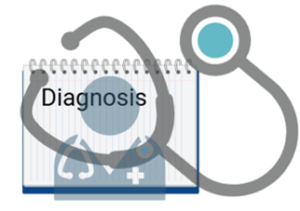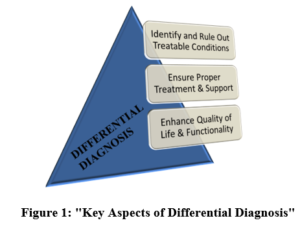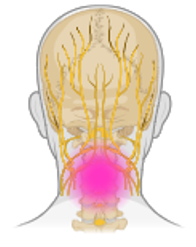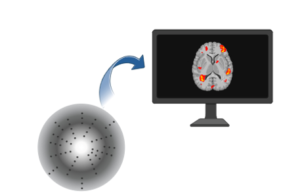Cervical Radiculopathy Diagnosis
Diagnosis

Diagnosis is the process of identifying a disease or medical condition based on symptoms, physical examination, and diagnostic tests. In order to diagnose cervical radiculopathy, it is necessary to assess nerve-related symptoms affecting the arms, shoulders, and neck in order to ascertain whether the reason is an inflamed or compressed cervical nerve root.
To differentiate cervical radiculopathy from other disorders that share its symptoms, like peripheral neuropathy or thoracic outlet syndrome, a correct diagnosis is essential. This procedure involves evaluating the symptoms of cervical radiculopathy, which include numbness, tingling, muscle weakness, and neck pain that radiates to the arms.

Understanding Cervical Radiculopathy Symptoms and Diagnosis
Before confirming the diagnosis, it is important to identify key cervical radiculopathy symptoms. Common symptoms include:
- Neck pain that may radiate to the arms and fingers
- Numbness or tingling in the affected arm or fingers
- Muscle weakness in the arms or hands
- Reduced reflexes in the upper limbs
- Pain that worsens with neck movement
A healthcare provider will assess these symptoms through clinical examination and history-taking.
Cervical Radiculopathy Diagnosis – Clinical Evaluation
The diagnosis of cervical radiculopathy begins with a physical examination and neurological assessment. Key diagnostic steps include:
- Medical History – The doctor asks about the onset, duration, and nature of the pain, as well as any previous neck injuries or degenerative conditions.
- Physical Examination – Checking neck movement, muscle strength, reflexes, and sensory deficits in the arms and hands.
- Special Tests –
- Spurling’s Test – The doctor applies pressure on the head while tilting it to the affected side to reproduce symptoms.
- Shoulder Abduction Test – Relief of pain when the patient places their hand on the top of the head suggests nerve root involvement.
- Neck Distraction Test – Gentle traction of the head to see if symptoms improve, indicating nerve compression.

Figure 2: In the case of a pinched nerve, inflammatory ligands such as substance P and nerve growth factors bind to nerve receptors, leading to pain, inflammation, and nerve sensitivity.
Role of Inflammatory Ligands in Cervical Radiculopathy
When a nerve root is compressed due to conditions like a herniated disc, bone spurs, or spinal degeneration, the body responds by releasing inflammatory mediators, including:
- Substance P – Triggers pain perception and nerve hypersensitivity.
- Nerve Growth Factor (NGF) – Increases inflammation and heightens pain sensitivity.
- Tumour Necrosis Factor-alpha (TNF-α) and Interleukins (IL-6, IL-1β) – Promote swelling, leading to further nerve compression.
Cervical Radiculopathy Differential Diagnosis
To ensure accurate diagnosis, doctors must rule out other conditions that mimic cervical radiculopathy. The differential diagnosis includes:
- Cervical spondylosis – Age-related degeneration of the cervical spine
- Thoracic outlet syndrome – Compression of nerves or blood vessels near the collarbone
- Rotator cuff injuries – Shoulder pain that may resemble nerve pain
- Multiple sclerosis (MS) – Neurological symptoms affecting movement and sensation
- Peripheral neuropathy – Nerve damage from diabetes or other causes
Imaging and Advanced Diagnostics
- X-ray – To check for spinal alignment and degenerative changes
- MRI (Magnetic Resonance Imaging) – Best for detecting nerve compression, herniated discs, or spinal cord abnormalities
- CT scan with Myelography – Helps visualize the spinal cord and nerve roots in greater detail
- Electromyography (EMG) and Nerve Conduction Studies (NCS) – Used to evaluate nerve function and rule out peripheral nerve disorders

Figure 3: X-ray diffraction reveals the atomic structure, while MRI detects functional changes in the brain, together aiding in understanding ligand interactions in neurological disorders.
Importance of Accurate Diagnosis
- Ensures timely and effective treatment to prevent worsening of symptoms
- Helps differentiate from other conditions that mimic nerve compression
- Guides the choice of treatment options, including physical therapy
In order to confirm the diagnosis, advanced imaging methods such as electromyography (EMG), CT scans with myelography, and magnetic resonance imaging (MRI) are essential. Healthcare practitioners can benefit from platforms such as Curapod , which is designed to treat conditions like neck pain, back pain, arthritis, and muscle soreness by using photo biomodulation to reduce inflammation and promote healing. In cases like cervical radiculopathy, where nerve-related symptoms affect the arms, shoulders, and neck due to an inflamed or compressed cervical nerve root, Curapod may help alleviate pain and inflammation, potentially reducing the severity of symptoms and the need for extensive medical diagnosis or interventions. However, proper medical assessment is still essential to confirm the root cause and determine the best course of treatment.


